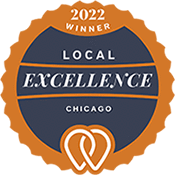When BP was confronted with the daunting challenge of managing the PR crisis after the oil-spill they didn’t just buy expensive TV spots and full page newspaper ads. Like any company with marketing-savvy, they put in place an aggressive, integrated SEO and social media marketing plan in order to saturate the search engines with “their” side of the story. They bought negative keywords for paid-search, quickly created micro-sites and devoted Facebook & Twitter pages for their message, all this to negotiate the narrative. They topped it all with a series of electronic press releases. The objective was to dominate Google in order to combat the negative buzz!
There is no reason why businesses can’t use this strategy to promote their products regularly, especially since this route is a lot easier and needs a lot less gas to reach the goals. What’s more, not only is it cheaper than buying prime time spots, research shows that in the long run social media and search optimization are more effective in winning over customers and keeping them.
That is why companies big and small are embracing social media and quickly diving head-first into the (deep, unfathomable) ocean of search engine optimization. Unfortunately in their haste to become digitally optimized these companies often neglect to create a cohesive strategy and fail to integrate optimally for maximum synergy. Early adopters of integrated social media and search strategies are seeing improved results in both areas, results that are greater than the sum! Here are some tips on creating synergy.
9 TIPS FOR INTEGRATING SOCIAL & SEO TO DOMINATE GOOGLE
- Develop an integrated strategy for search and social: It pays to create a strategy that assigns cross-channel goals and identifies specific areas for synergistic-leverage.
- Identify overall goals and assign individual KPI: Set up over-arching goals to galvanize integration and channel-specific goals to measure performance based on the unique characteristics of the platform or tool.
- Create a master-list of keywords & descriptions: It is crucial to arm your teams with brand and promotions-related keywords and descriptions that will create alignment of message and search engine resonance for improved ranking.
- Adapt link-bait campaigns for social media: Creating link-bait campaigns like infographs, quizzes, how-to articles, and Wikipedia articles is a crucial part of a robust SEO plan. This type of content is also ideal for going viral! Repurpose it for creating content to feed all the social media channels.
- Adapt social media content for back-link-campaigns: Social media polls and crowd-sourced tips and tricks can be compiled to create reference articles to attract backlinks.
- Aggregate social media content on core website: Using aggregations tools like RSS to pull in social media content into your website is great for sourcing regularly updated material.
- Develop badges and widgets from social media contests: Widgets and badges with embedded links to your website are great for growing backlinks and increasing brand visibility. Customers love to display creative badges and search engines love the links!
- Create and publish electronic press releases to announce social contests & results: Results of polls, winners of contests etc., is all news! Publish a press release through PRweb or PR Newswire to gain more real-estate on search engines.
- Create social-relationships for backlinks and content: Blog-rolls, track-backs, pings and citations are great for creating reciprocal relationships…and backlinks! The more back-links the higher your website ranks.
Fresh content, backlinks, press-releases, optimized social media profiles, commenting on blogs and articles are all tactics that will make you popular with customers and search engines alike! Go ahead and synergize, you’ll see how quickly your brand fills up those search-engine-results-pages (SERP).

